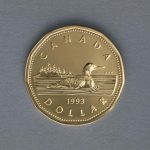Yesterday’s trade saw GBP/USD within the range of 1.4362-1.4481. The pair closed at 1.4366, losing 0.80% on a daily basis. It has been the 30th drop in the past 56 trading days. The daily low has been the lowest level since March 17th, when a low of 1.4219 was registered. GBP/USD has trimmed its advance to 3.30% so far during the current month.
At 7:22 GMT today GBP/USD was edging up 0.10% for the day to trade at 1.4381. The pair touched a daily low at 1.4365 during the early phase of the Asian trading session, undershooting the daily S1 level, and a daily high at 1.4398 at 6:45 GMT.
On Tuesday GBP/USD trading may be influenced by the following macroeconomic reports as listed below.
Fundamentals
United Kingdom
Consumer Price Inflation
The annual rate of inflation in the United Kingdom probably remained at 0.3% for a second straight month in February, according to the median estimate by experts. If so, it would be the 25th consecutive month, when annualized consumer prices remained below the 2-percent objective, set by the Bank of England. Januarys rate has also been the highest annual consumer price inflation since January 2015, when consumer prices climbed 0.3% year-on-year as well.
In January upward pressure to consumer prices came from cost of housing and utilities (up 0.4% year-on-year, following a 0.3% gain in the previous two months). An additional upward impulse came from prices at restaurants and hotels (up 1.6% and following a 1.7% surge in December) and cost of miscellaneous goods and services (up 1.4% and following a 1.1% increase in the preceding month), according to the report by the Office for National Statistics.
On the other hand, in January downward pressure to the Consumer Price Index came from cost of recreation and culture (down 0.1% year-on-year after a 0.3% drop in December), food and non-alcoholic beverages (down 2.6% and decelerating from a 2.9% slump in the prior month) and transport (down 0.7% and accelerating from a 0.2% decrease in December).
The annualized core consumer price inflation probably remained at 1.2% for a second straight month in February, according to market expectations. In December the Core Consumer Price Index increased at an annual rate of 1.4%, or the fastest since January 2015. This indicator measures the change in prices of goods and services purchased by consumers, without taking into account volatile components such as food, energy products, alcohol and tobacco.
In case the annual CPI came in line with expectations or further approached the central bank’s inflation objective, this would have a strong bullish effect on the pound. The Office for National Statistics (ONS) will publish the official CPI report at 8:30 GMT.
United States
Manufacturing PMI by Markit – preliminary reading
Manufacturing activity in the United States probably increased at a faster rate in March, with the corresponding preliminary Purchasing Managers Index coming in at a reading of 51.8, according to market expectations. In February the final seasonally adjusted PMI stood at 51.3, improving from a preliminary 51.0. It has been the lowest PMI level since October 2012, when the index was reported at a final 51.0.
According to Markits statement: ”The latest increase in production was only modest and the weakest recorded since October 2013. Reports from survey respondents suggested that softer new business growth and uncertainty about the economic outlook had acted as a brake on production at their plants.”
”Volumes of new work increased moderately in February, with the pace of expansion easing to one of the slowest recorded over the past three-and-ahalf years. Anecdotal evidence suggested that clients had delayed spending decisions in February amid caution about the business outlook. Additionally, there were further reports citing weak demand from energy sector clients. Subdued export demand also weighed on new business levels in February. The latest survey pointed to the most marked decline in new orders from abroad since April 2015, which manufacturers partly linked to competitive pressures from the strong dollar.”
”Softer overall new business growth contributed to a renewed drop in backlogs of work across the manufacturing sector in February. At the same time, employment growth moderated for the second successive month. The latest increase in payroll numbers was only modest, and the weakest recorded since September 2015. A number of firms suggested that the uncertain business outlook had led to more cautious staff hiring patterns at their plants.”
Values above the key level of 50.0 indicate optimism (expanding activity). In case the flash manufacturing PMI showed a better-than-anticipated performance, this would have a moderate bullish effect on the US dollar. The preliminary PMI reading by Markit Economics is due out at 13:45 GMT.
Daily and Weekly Pivot Levels
By employing the Camarilla calculation method, the daily pivot levels for GBP/USD are presented as follows:
R1 – 1.4377
R2 – 1.4388
R3 (range resistance) – 1.4399
R4 (range breakout) – 1.4431
S1 – 1.4355
S2 – 1.4344
S3 (range support) – 1.4333
S4 (range breakout) – 1.4301
By using the traditional method of calculation, the weekly pivot levels for GBP/USD are presented as follows:
Central Pivot Point – 1.4350
R1 – 1.4648
R2 – 1.4816
R3 – 1.5114
S1 – 1.4182
S2 – 1.3884
S3 – 1.3716





